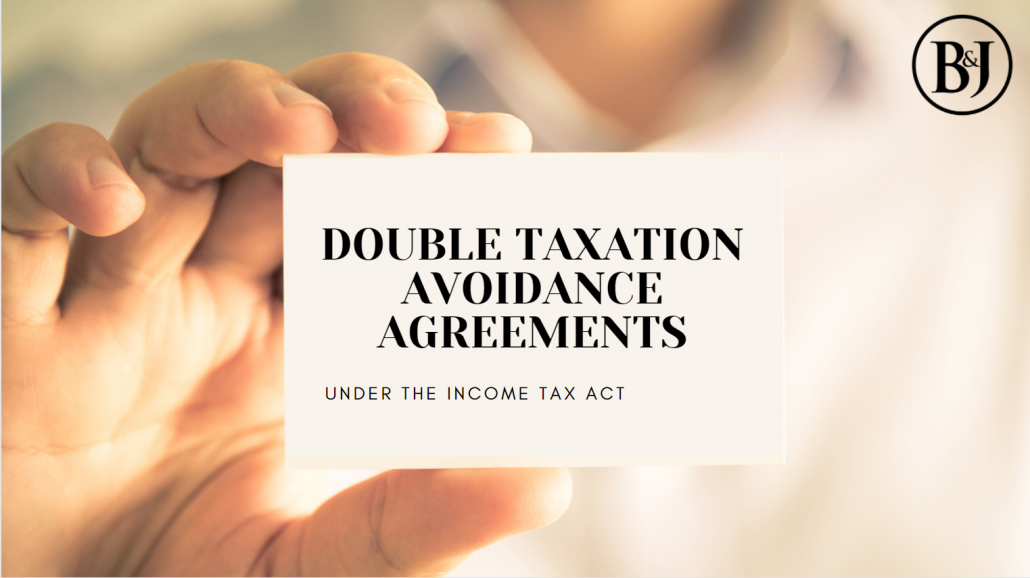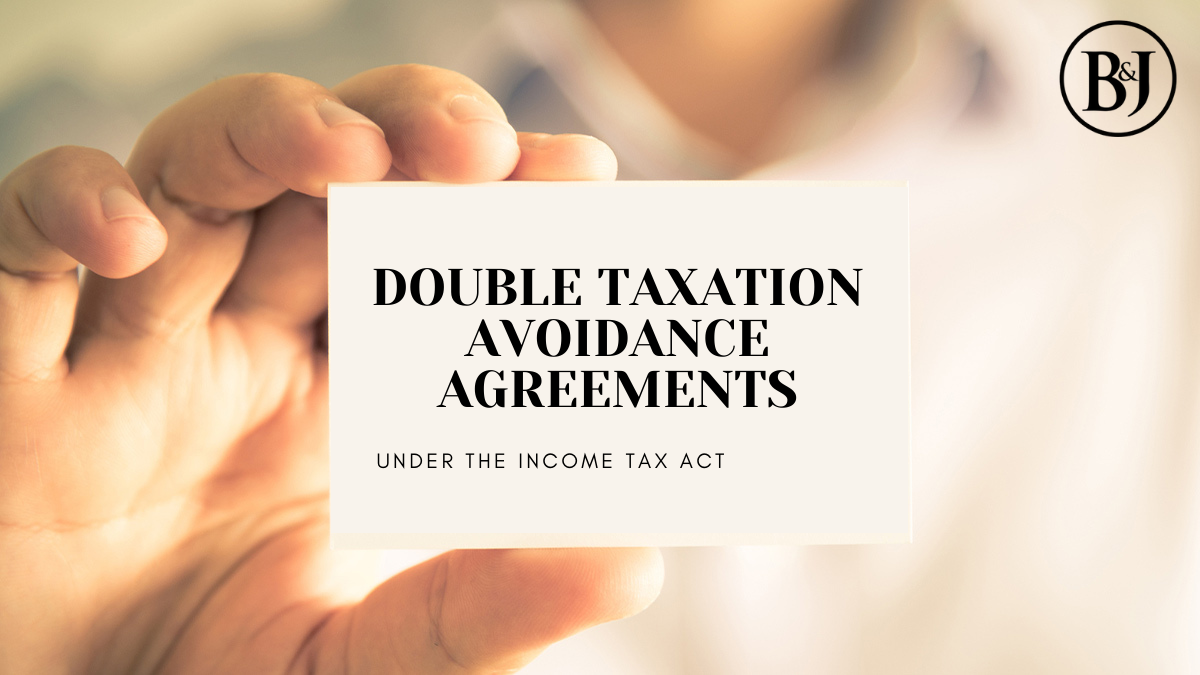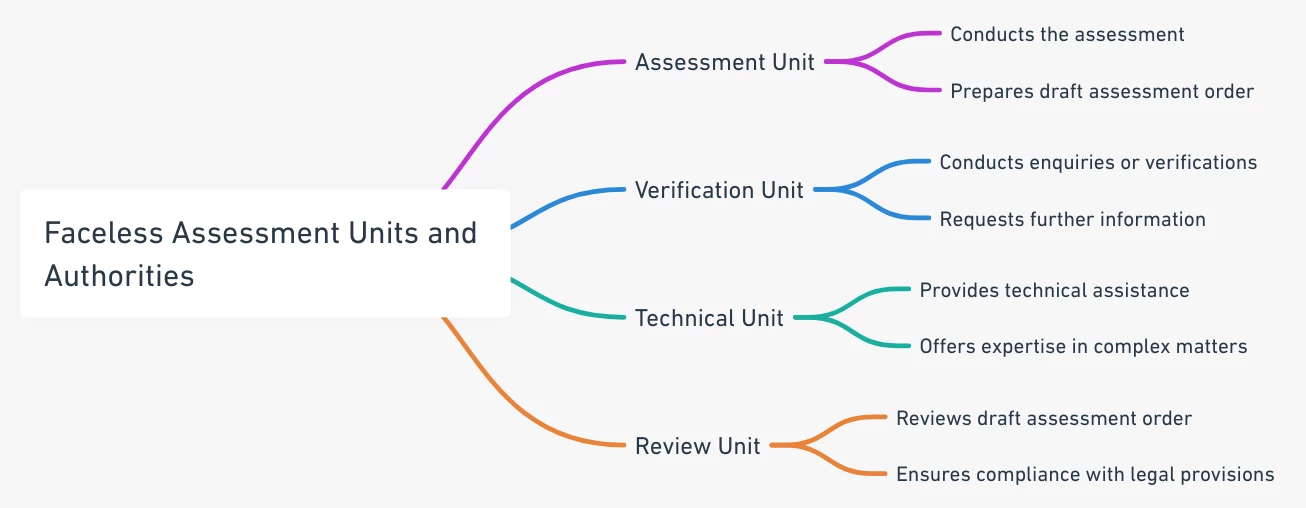Double Taxation Avoidance Agreements Under the Income Tax Act: A Comprehensive Legal Analysis
Introduction to Double Taxation Avoidance Agreements
In today’s interconnected global economy, the phenomenon of double taxation presents significant challenges to international trade and investment. Double taxation occurs when the same income is subjected to taxation by two or more countries, creating an unfair burden on taxpayers and hindering cross-border economic activities. To address this challenge, countries worldwide have developed Double Taxation Avoidance Agreements (DTAAs), which serve as bilateral or multilateral treaties designed to eliminate or reduce instances of double taxation.
The concept of Double Taxation Avoidance Agreements (DTAAs) emerged from the recognition that unrestricted double taxation could severely impede international commerce and economic growth. These agreements establish clear frameworks for determining which country has the primary right to tax specific types of income, thereby providing certainty and fairness to taxpayers engaged in cross-border transactions. The fundamental principle underlying DTAAs is the allocation of taxing rights between the source country (where income is generated) and the residence country (where the taxpayer is domiciled), ensuring that income is not subjected to excessive taxation in multiple jurisdictions.
India, as a rapidly growing economy with substantial foreign investment flows and a significant diaspora, has recognized the critical importance of DTAAs in fostering international economic cooperation. The country has systematically pursued an extensive network of tax treaties, demonstrating its commitment to creating a favorable environment for international business and investment. Currently, India maintains comprehensive DTAAs with over 94 countries [1], reflecting its strategic approach to international taxation and economic diplomacy.

BHATT & JOSHI ASSOCIATES INCOME TAX LAWYERS
Legal Framework Governing Double Taxation Avoidance Agreements in India
The legal foundation for DTAAs in India is established under the Income Tax Act, 1961, specifically through Sections 90, 90A, and 91. These provisions empower the Central Government to enter into agreements with foreign countries and specified associations to provide relief from double taxation. Section 90 of the Income Tax Act provides the primary authority for the Central Government to negotiate and implement DTAAs with foreign countries or specified territories [2].
Under Section 90, the Central Government is empowered to enter into agreements with any foreign government for the following purposes: granting relief from double taxation of income under the laws of both countries; avoidance of double taxation; and facilitating the exchange of information for the prevention of tax evasion. The section explicitly states that where a DTAA provides for more beneficial treatment than the provisions of the Income Tax Act, the taxpayer may opt for the more favorable provision [3].
Section 90A extends this framework to agreements between specified associations in India and their foreign counterparts. This provision recognizes the importance of institutional cooperation in international taxation matters and provides a mechanism for relief from double taxation even when formal government-to-government agreements may not exist.
Section 91 addresses situations where no formal DTAA exists between India and another country. This unilateral relief provision ensures that Indian residents are not unduly burdened by double taxation even in the absence of bilateral agreements. Under Section 91, relief is granted up to the amount of Indian tax attributable to such income or the amount of foreign tax paid, whichever is lower [4].
Analysis of the India-UAE DTAA Framework
The Double Taxation Avoidance Agreement between India and the United Arab Emirates, signed in 1992 and effective from September 22, 1993, represents a significant milestone in bilateral economic cooperation [5]. This agreement follows the structure of international tax treaty models while incorporating specific provisions tailored to the economic relationship between the two countries.
Scope and Coverage of the India-UAE DTAA
The India-UAE DTAA covers various forms of taxes imposed by both countries, including income tax, wealth tax, and capital gains tax. Article 2 of the agreement defines the scope of covered taxes, ensuring comprehensive protection against double taxation across multiple categories of income and wealth [6]. The agreement applies to residents of both contracting states and covers various sources of income including business profits, dividends, interest, royalties, capital gains, and income from immovable property.
Business Profits and Permanent Establishment
One of the most significant aspects of the India-UAE DTAA is its treatment of business profits and the concept of permanent establishment. Article 7 of the agreement governs the taxation of business profits, establishing that the profits of an enterprise of one contracting state are taxable only in that state unless the enterprise carries on business in the other contracting state through a permanent establishment situated therein.
The definition of permanent establishment under Article 5 of the India-UAE DTAA follows international standards while providing specific inclusions and exclusions. The agreement defines permanent establishment as “a fixed place of business through which the business of an enterprise is wholly or partly carried on.” This definition includes specifically enumerated examples such as places of management, branches, offices, factories, workshops, mines, oil or gas wells, quarries, farms, plantations, and building sites or construction projects lasting more than nine months.
The judicial interpretation of permanent establishment has been clarified in landmark cases. In CIT v. Vishakhapatnam Port Trust [(1983) 144 ITR 146 (AP)], the Andhra Pradesh High Court observed that “permanent establishment” postulates the existence of a substantial element of an enduring or permanent nature of a foreign enterprise in another country, which can be attributed to a fixed place of business in that country [7].
Treatment of Fees for Technical Services
A distinctive feature of the India-UAE DTAA is the absence of a specific provision dealing with fees for technical services (FTS). Unlike many other Double Taxation Avoidance Agreements (DTAAs) that India has concluded, the India-UAE agreement does not contain a dedicated article addressing the taxation of technical service fees. This omission is not accidental but represents a deliberate mutual agreement between the contracting states.
The absence of specific FTS provisions means that payments for technical services must be classified under other articles of the agreement. Such payments typically fall under Article 7 (Business Profits), Article 14 (Independent Personal Services), or Article 22 (Other Income), depending on the specific circumstances of the service provision and the relationship between the parties.
In cases where technical service fees cannot be attributed to a permanent establishment or fixed base, such income is generally treated as business profits taxable only in the state of residence of the service provider. This treatment has been consistently upheld by Indian tax authorities and tribunals in various decisions.
Independent Personal Services and Other Income
Article 14 of the India-UAE DTAA addresses the taxation of income derived from independent personal services. Under this provision, income derived by a resident of one contracting state in respect of professional services or other activities of an independent character is taxable only in that state, except in specific circumstances. These exceptions include situations where the individual has a fixed base regularly available in the other contracting state or where the stay in the other state exceeds 183 days in the relevant tax year.
The scope of “independent personal services” under Article 14 has been subject to interpretation by tax authorities and courts. The provision covers various professional activities including consultancy services, advisory services, and other similar independent activities. However, it is important to distinguish between independent personal services and dependent personal services, which are governed by Article 15 of the agreement.
Article 22 of the India-UAE DTAA serves as a residual provision covering “Other Income” not specifically dealt with in other articles of the agreement. Under this article, items of income of a resident of one contracting state that are not expressly covered elsewhere in the agreement are taxable only in the state of residence.
Capital Gains Taxation
Article 13 of the India-UAE DTAA provides comprehensive rules for the taxation of capital gains arising from the alienation of various types of property. The article establishes different treatment for different categories of assets, reflecting the principle that capital gains should generally be taxed in the country where the underlying asset is located or where the entity being disposed of has its primary economic substance.
Under Article 13, gains from the alienation of immovable property situated in one contracting state may be taxed in that state. Similarly, gains from the alienation of shares deriving their value principally from immovable property situated in one contracting state may be taxed in that state. For other types of property, including movable property forming part of the business property of a permanent establishment, gains are generally taxable in the state where the property is situated or the permanent establishment is located.
Regulatory Compliance and Implementation
The implementation of DTAA benefits requires strict compliance with prescribed procedures and documentation requirements. Taxpayers seeking to claim DTAA benefits must satisfy specific conditions and provide necessary documentation to substantiate their claims.
Tax Residency Certificate and Form 10F
To claim benefits under the India-UAE DTAA, taxpayers must obtain a Tax Residency Certificate (TRC) from the tax authorities of their country of residence. The TRC serves as conclusive proof of the taxpayer’s tax residency status and is mandatory for claiming treaty benefits in India. The certificate must be obtained for each financial year in which treaty benefits are claimed and must contain specific information as prescribed by Indian tax authorities.
In addition to the TRC, taxpayers may be required to file Form 10F electronically, providing detailed information about their residency status, income sources, and other relevant particulars. Form 10F serves as a declaration of the taxpayer’s eligibility for treaty benefits and helps tax authorities verify the legitimacy of claims.
Foreign Tax Credit Mechanism
The India-UAE DTAA provides for relief from double taxation through the foreign tax credit mechanism outlined in Article 25. Under this provision, Indian residents who earn income in the UAE and pay tax thereon may claim credit for the UAE tax paid against their Indian tax liability on the same income. Similarly, UAE residents paying tax in India may claim credit for such Indian tax against their UAE tax obligations.
The foreign tax credit is subject to certain limitations and conditions. The credit allowable cannot exceed the Indian tax attributable to such income computed before allowing the credit. The computation requires careful allocation of income and taxes to ensure proper relief while preventing excessive credit claims.
Recent Judicial Developments and Interpretations
Recent judicial decisions have provided important clarifications on the interpretation and application of DTAA provisions, particularly in the context of the India-UAE agreement. Courts have consistently emphasized the importance of proper classification of income and the application of appropriate treaty articles.
In the context of technical services, tribunals have held that in the absence of specific FTS provisions in a DTAA, such services must be evaluated under other applicable articles. The Income Tax Appellate Tribunal has observed that payments for technical services should be analyzed under business profits provisions when no specific technical services article exists in the relevant DTAA.
The Delhi High Court has also provided significant guidance on the classification of services under DTAA provisions. In cases involving UAE entities providing various services to Indian companies, courts have emphasized the need to properly classify income under appropriate DTAA articles, whether as business profits, independent personal services, or other income, depending on the specific facts and circumstances.
Challenges and Planning Opportunities
The India-UAE DTAA, while providing substantial benefits for cross-border economic activities, also presents certain challenges and planning opportunities that taxpayers and advisors must carefully consider.
Substance Requirements and Anti-Avoidance Measures
Recent developments in international taxation have introduced enhanced substance requirements and anti-avoidance measures that impact the application of DTAA benefits. Taxpayers must demonstrate genuine business substance in their country of residence to qualify for treaty benefits. This includes maintaining adequate physical presence, conducting real business activities, and demonstrating economic substance beyond mere tax planning considerations.
The Principal Purpose Test (PPT) and other anti-treaty shopping measures are increasingly being incorporated into tax treaties, including through the Multilateral Instrument (MLI) that India has signed. These measures require taxpayers to demonstrate that obtaining treaty benefits was not the principal purpose of their arrangements or transactions.
Documentation and Compliance Requirements
Proper documentation and compliance with procedural requirements are essential for successfully claiming DTAA benefits. This includes maintaining comprehensive records of income sources, tax payments, business activities, and residency status. Failure to meet documentation requirements can result in denial of treaty benefits and potential disputes with tax authorities.
Taxpayers must also be aware of specific deadlines and procedures for claiming treaty benefits, including the filing of required forms and certificates within prescribed time limits. Late submissions or incomplete documentation can jeopardize the availability of treaty relief.
Future Developments and Trends
The landscape of international taxation and DTAA application continues to evolve with changing global economic conditions and regulatory developments. Several trends are likely to impact the India-UAE DTAA and similar agreements in the coming years.
Digital Economy and Nexus Rules
The digitalization of the global economy presents new challenges for traditional DTAA concepts such as permanent establishment and source rules. International efforts to address the taxation of digital services and the digital economy may result in modifications to existing treaties or the development of new rules for digital nexus and profit attribution.
Enhanced Information Exchange and Transparency
The global push for tax transparency and automatic exchange of information is likely to continue, with implications for DTAA implementation and compliance. Enhanced reporting requirements and information sharing between tax authorities will increase the importance of proper documentation and compliance with treaty requirements.
BEPS Implementation and MLI
The implementation of Base Erosion and Profit Shifting (BEPS) recommendations through the Multilateral Instrument and bilateral treaty modifications will continue to impact DTAA application. Anti-avoidance measures, enhanced dispute resolution procedures, and revised PE definitions are among the changes that may affect the India-UAE DTAA and similar agreements.
Conclusion
The Double Taxation Avoidance Agreement between India and the UAE represents a crucial framework for promoting bilateral economic cooperation while providing essential protection against double taxation. The agreement’s comprehensive coverage of various income types, clear allocation of taxing rights, and provision for mutual cooperation in tax matters have contributed significantly to the growth of economic ties between the two countries.
The absence of specific technical services provisions in the India-UAE DTAA requires careful analysis and proper classification of income under other applicable articles. Taxpayers must ensure compliance with all procedural requirements and maintain adequate documentation to successfully claim treaty benefits.
As the international tax landscape continues to evolve, staying informed about regulatory developments, judicial interpretations, and compliance requirements remains essential for taxpayers and advisors dealing with India-UAE cross-border transactions. The continued effectiveness of the DTAA framework depends on proper implementation, adequate compliance measures, and adaptation to changing global economic conditions.
The India-UAE DTAA serves as an excellent example of how bilateral tax treaties can facilitate international economic cooperation while ensuring fair and efficient taxation of cross-border income. Its provisions continue to support growing economic ties between India and the UAE, contributing to increased trade, investment, and economic development in both countries.
References
[1] Income Tax Department, Government of India. “Double Taxation Avoidance Agreements.” Available at: https://incometaxindia.gov.in/pages/international-taxation/dtaa.aspx
[2] Income Tax Act, 1961, Section 90. Available at: https://cleartax.in/s/section-90-90a-91-of-income-tax-act
[3] IndiaFilings. “Double Taxation Relief – Sections 90, 90A, and 91 of the Income Tax Act.” Available at: https://www.indiafilings.com/learn/double-taxation-relief/
[4] Tax2win. “Relief Under Section 90/90A/91 of Income Tax Act.” Available at: https://tax2win.in/guide/relief-under-section-90-90a-91
[5] ClearTax. “Double Tax Avoidance Agreement (DTAA) Between India and UAE.” Available at: https://cleartax.in/s/india-uae-dtaa
[6] Tax2win. “Understanding DTAA Between India and UAE.” Available at: https://tax2win.in/guide/dtaa-between-india-and-uae
[7] CIT v. Vishakhapatnam Port Trust (1983) 144 ITR 146 (AP)
 Whatsapp
Whatsapp



